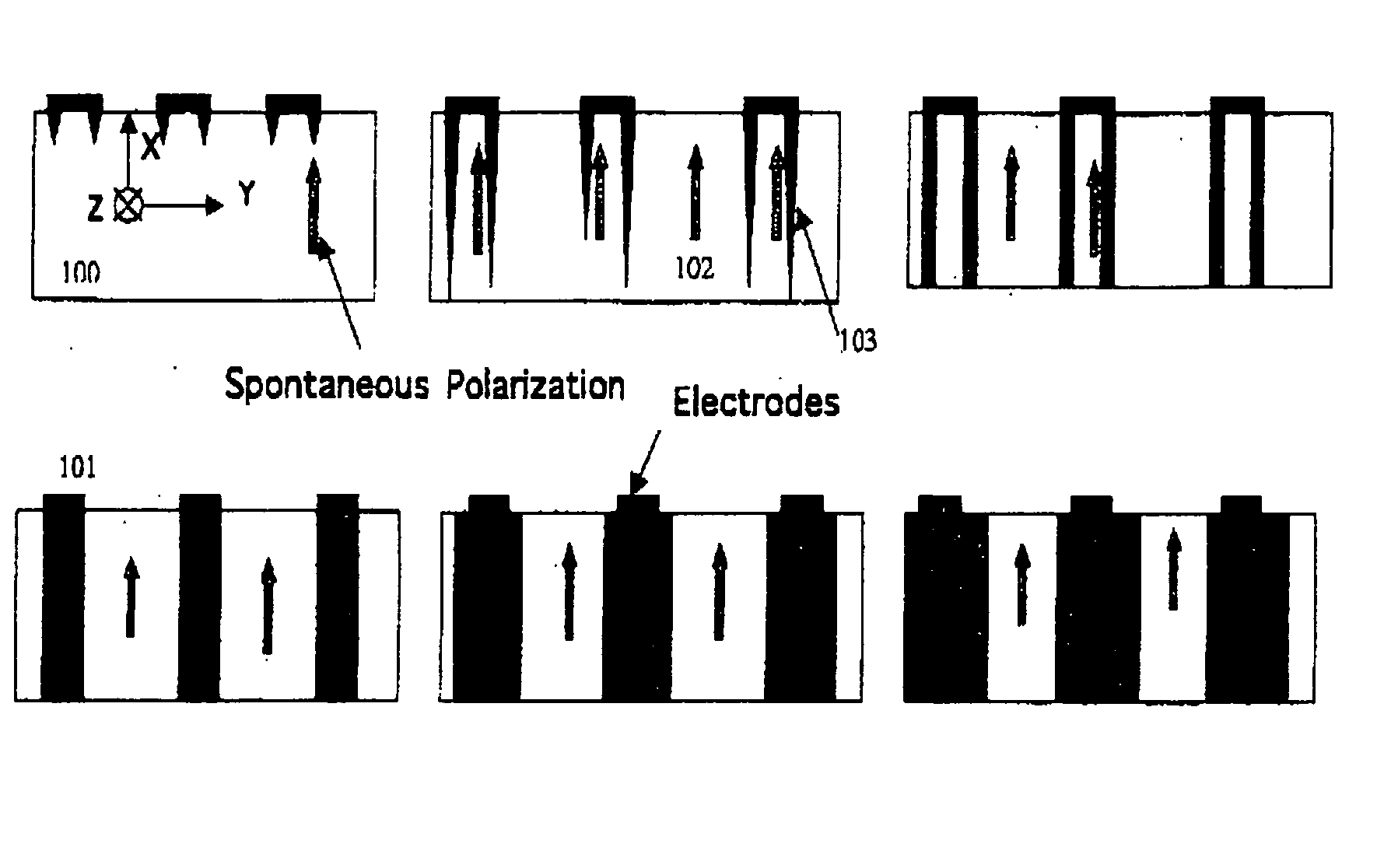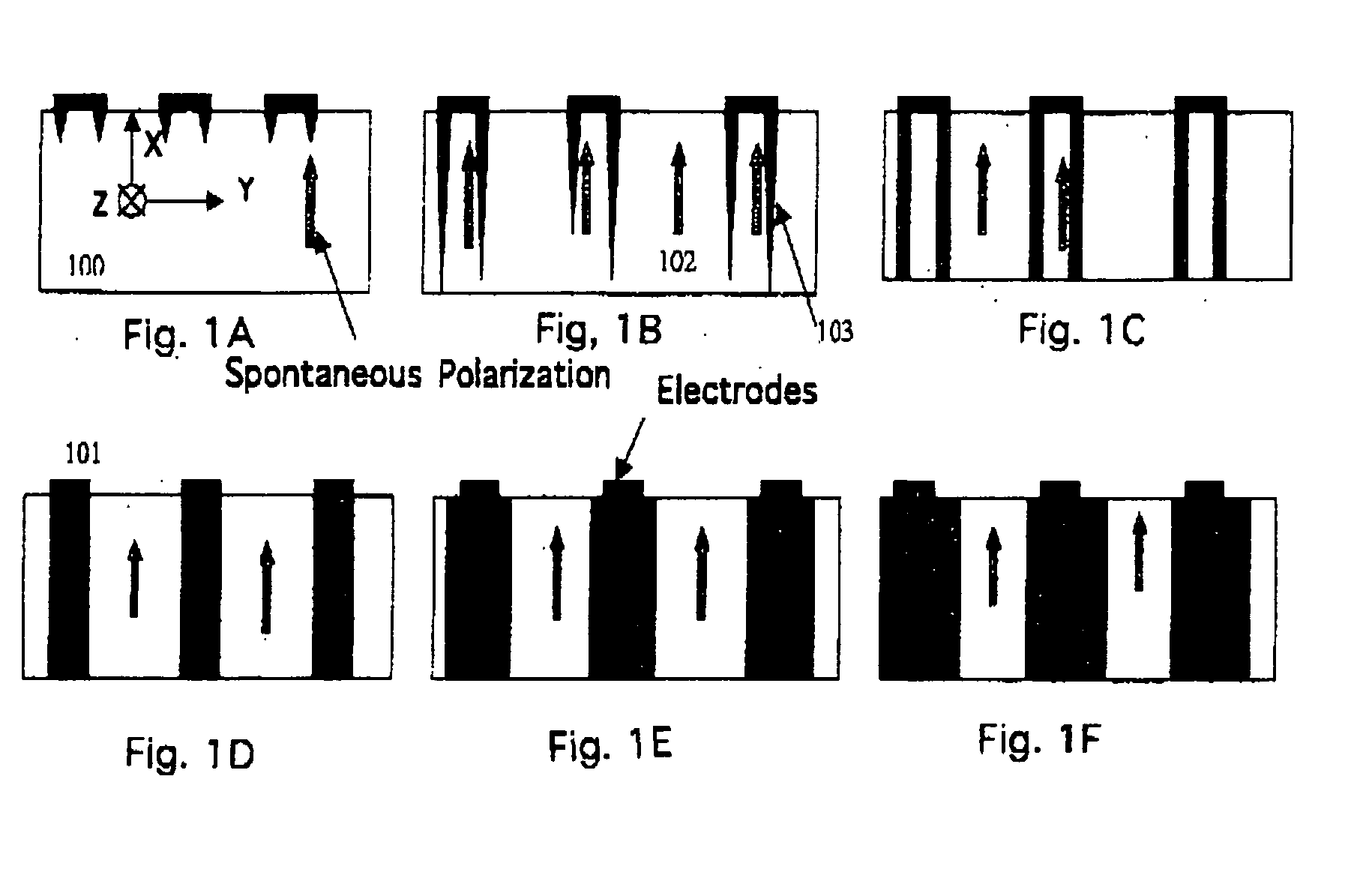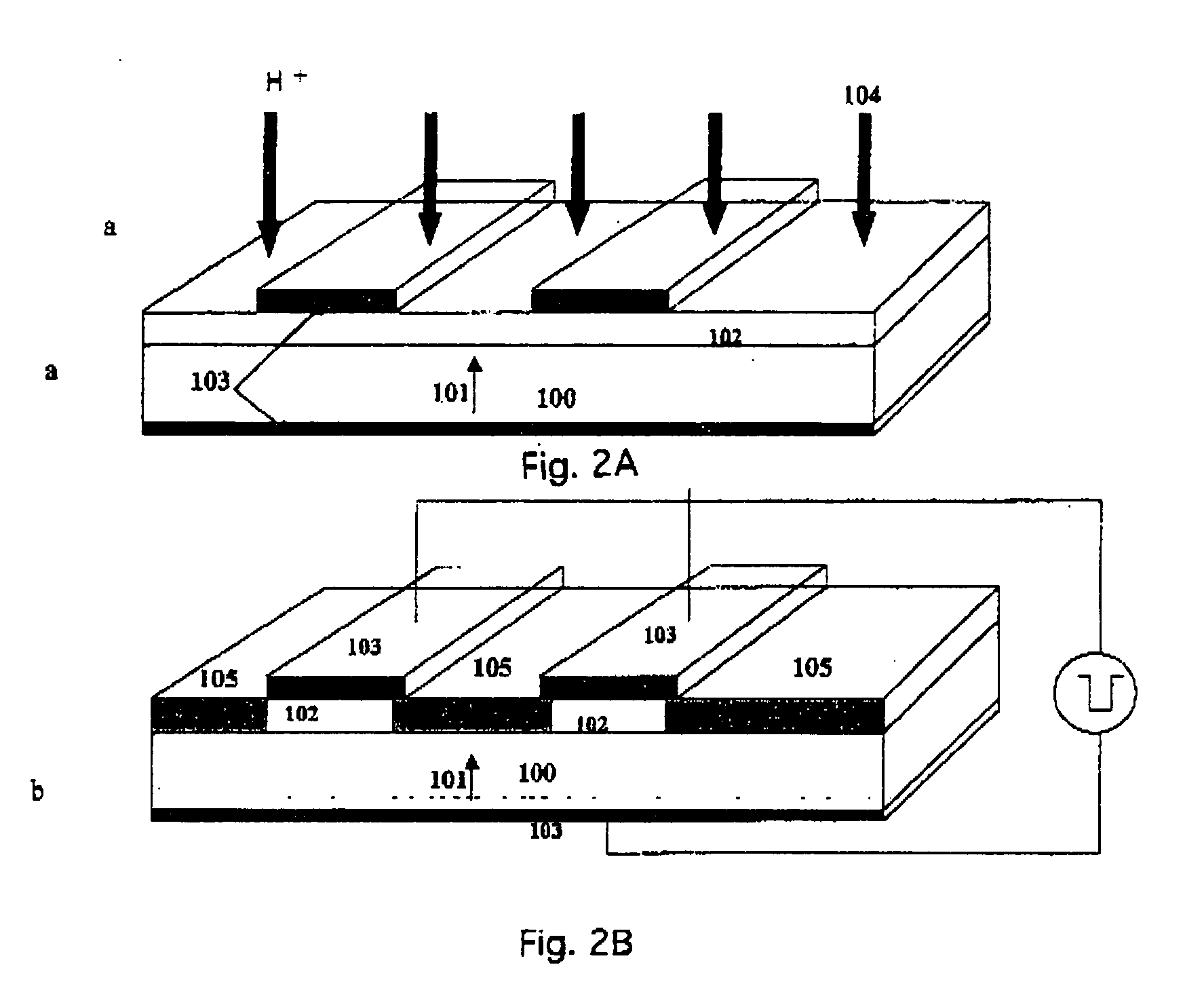Method for the fabrication of periodically poled Lithium Niobate and Lithium Tantalate nonlinear optical components
a nonlinear optical component and lithium tantalate technology, applied in the field of process for the fabrication of lino3 and litao3 optical devices, can solve the problems of slow and complicated growth process of sln or slt, no data on uniform optical parameters, and complex physics of domain formation in ln and lt ferroelecric crystals, etc., to reduce the influence of domain growth, slow the growth rate of domain growth, and increase the growth rate of nucleation rate ra
- Summary
- Abstract
- Description
- Claims
- Application Information
AI Technical Summary
Benefits of technology
Problems solved by technology
Method used
Image
Examples
Embodiment Construction
[0041] The process and product of the present invention are explained in greater detail below with reference to FIGS. 2-5. Referring first to FIGS. 2a and 2b, a single-domain congruent LN or LT wafer (substrate) 100 has a natural polarization direction as shown by the arrow 101. To obtain a sharp and defect-free interface between the deposited SLN or SLT film and the congruent LN or LT wafer substrate, a pre-deposition cleaning process of the wafer is preferably carried out, for example, by oxygen plasma washing. Next, a, for example, 0.2 μm thick SLN or SLT film (102) is deposited, preferably by the sol-gel process.
[0042] I have found that the after the crystallization of the film at, for example, 450° C., a single crystal stoichiometric film is formed in a single-domain state with its polarization in the same direction as that of the substrate.
[0043] Ta films, 0.1 μm thick (103), deposited, for example by plasma vapor sputtering (PVD)can be used as electrodes. The Ta film on the...
PUM
| Property | Measurement | Unit |
|---|---|---|
| thickness | aaaaa | aaaaa |
| thickness | aaaaa | aaaaa |
| temperature | aaaaa | aaaaa |
Abstract
Description
Claims
Application Information
 Login to View More
Login to View More - R&D
- Intellectual Property
- Life Sciences
- Materials
- Tech Scout
- Unparalleled Data Quality
- Higher Quality Content
- 60% Fewer Hallucinations
Browse by: Latest US Patents, China's latest patents, Technical Efficacy Thesaurus, Application Domain, Technology Topic, Popular Technical Reports.
© 2025 PatSnap. All rights reserved.Legal|Privacy policy|Modern Slavery Act Transparency Statement|Sitemap|About US| Contact US: help@patsnap.com



